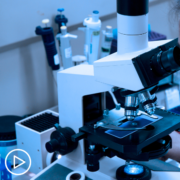How Long Will Myeloma Maintenance Therapy Last?
How Long Will Myeloma Maintenance Therapy Last? from Patient Empowerment Network on Vimeo.
Dr. Joshua Richter, a myeloma specialist, reviews the goals of maintenance therapy and discusses the timeline for this type of treatment.
Dr. Joshua Richter is director of Multiple Myeloma at the Blavatnik Family – Chelsea Medical Center at Mount Sinai. He also serves as Assistant Professor of Medicine in The Tisch Cancer Institute, Division of Hematology and Medical Oncology. Learn more about Dr. Richter, here.
Related Programs:

|

|

What Myeloma Patients Should Know About Treatment Monitoring |
Transcript:
Katherine:
Isaac sent us this question. How long does the average myeloma patient remain on Revlimid? And is there a suggested time period?
Dr. Richter:
Really great question. It depends upon the setting we’re looking at, and for the most part, a lot of people are probably asking about the maintenance setting. So, after initial therapy or after transplant, we put you on Revlimid. How long do we keep you on? The American adage has always been, “More is better,” so as long as you tolerate it and as long as it works. Outside of the U.S., they’ve done a couple of studies looking at one year and then stopping, or two years and then stopping.
And in a big trial that got presented a year or so ago, they compared the two years then stopping versus just staying on, and the people who just stay on do better.
So, now the current thinking is just keep you on long-term. What’s going to change that in the long term is we’re starting to use a technology called MRD, minimal residual disease, so, doing a marrow and trying to find one in a million or one in 10 million cancer cells.
And then, there’s something called sustained MRD meaning if you do two MRD analyses at least 12 months apart and they’re both negative, we call that sustained MRD-negative.
And, there’s a hint that some people on maintenance Revlimid who have sustained their MRD negativity, they may do just as well stopping versus staying on it. We don’t know exactly who that is yet, but that’s going to be better understood in the next few years.











